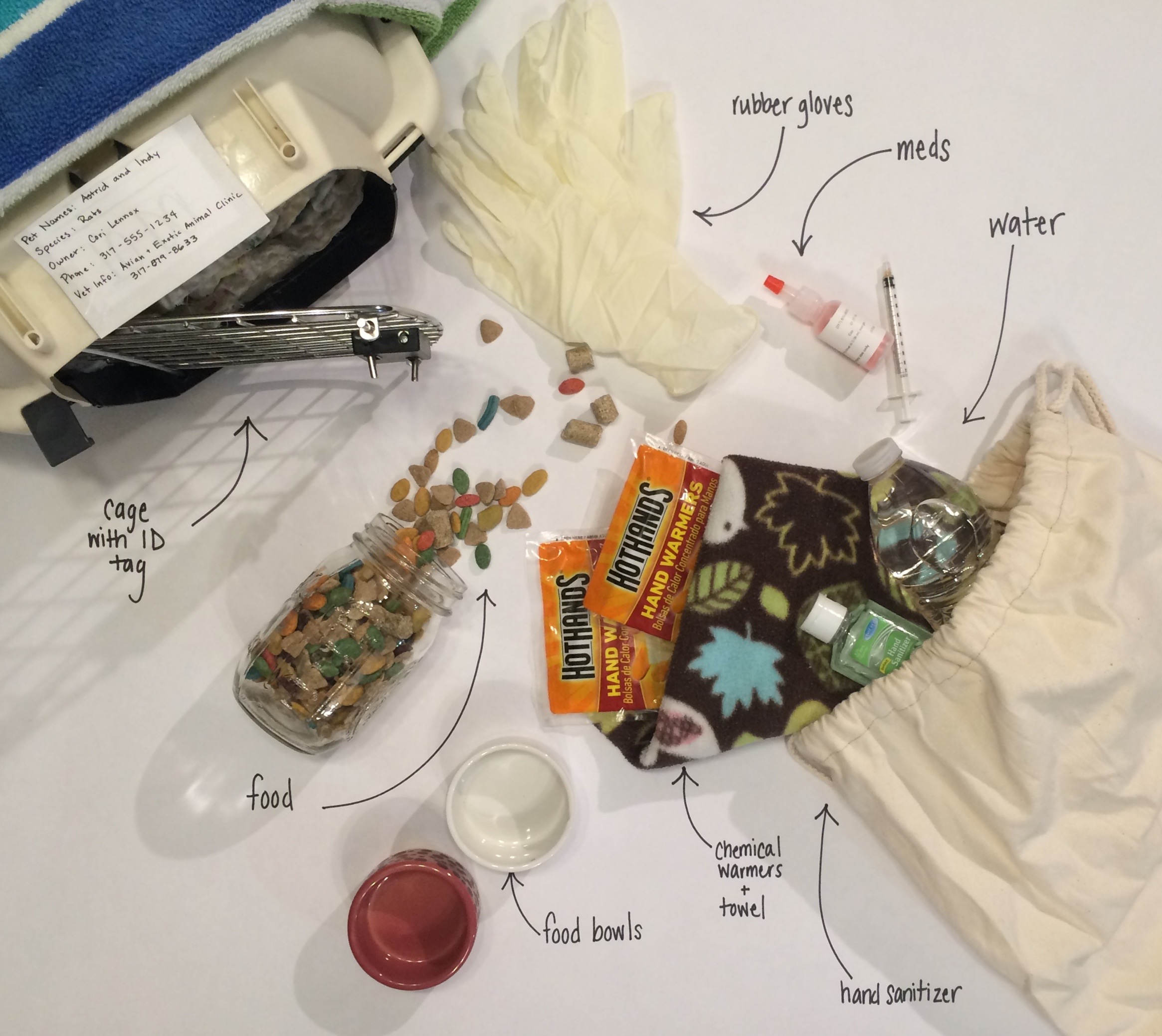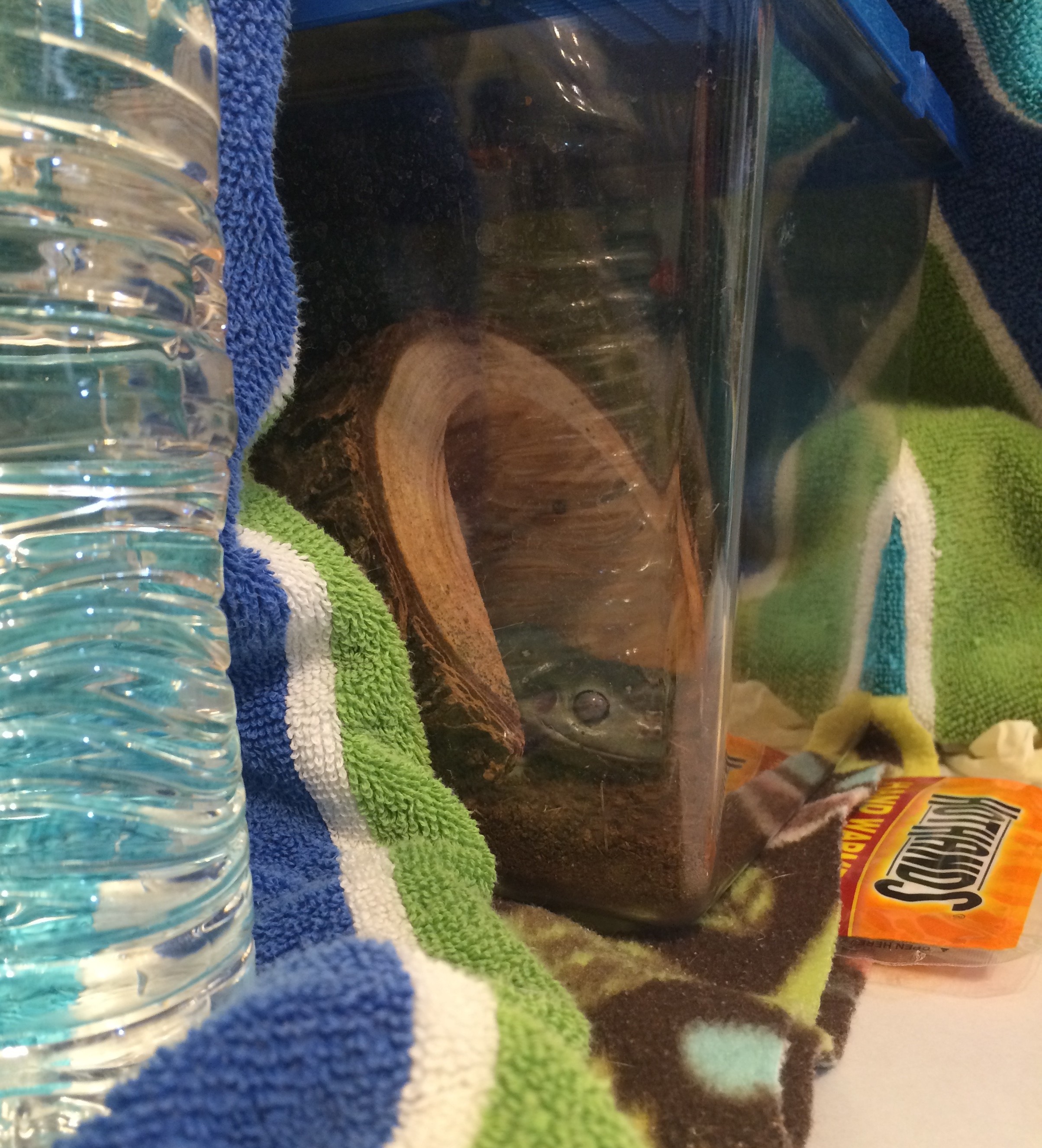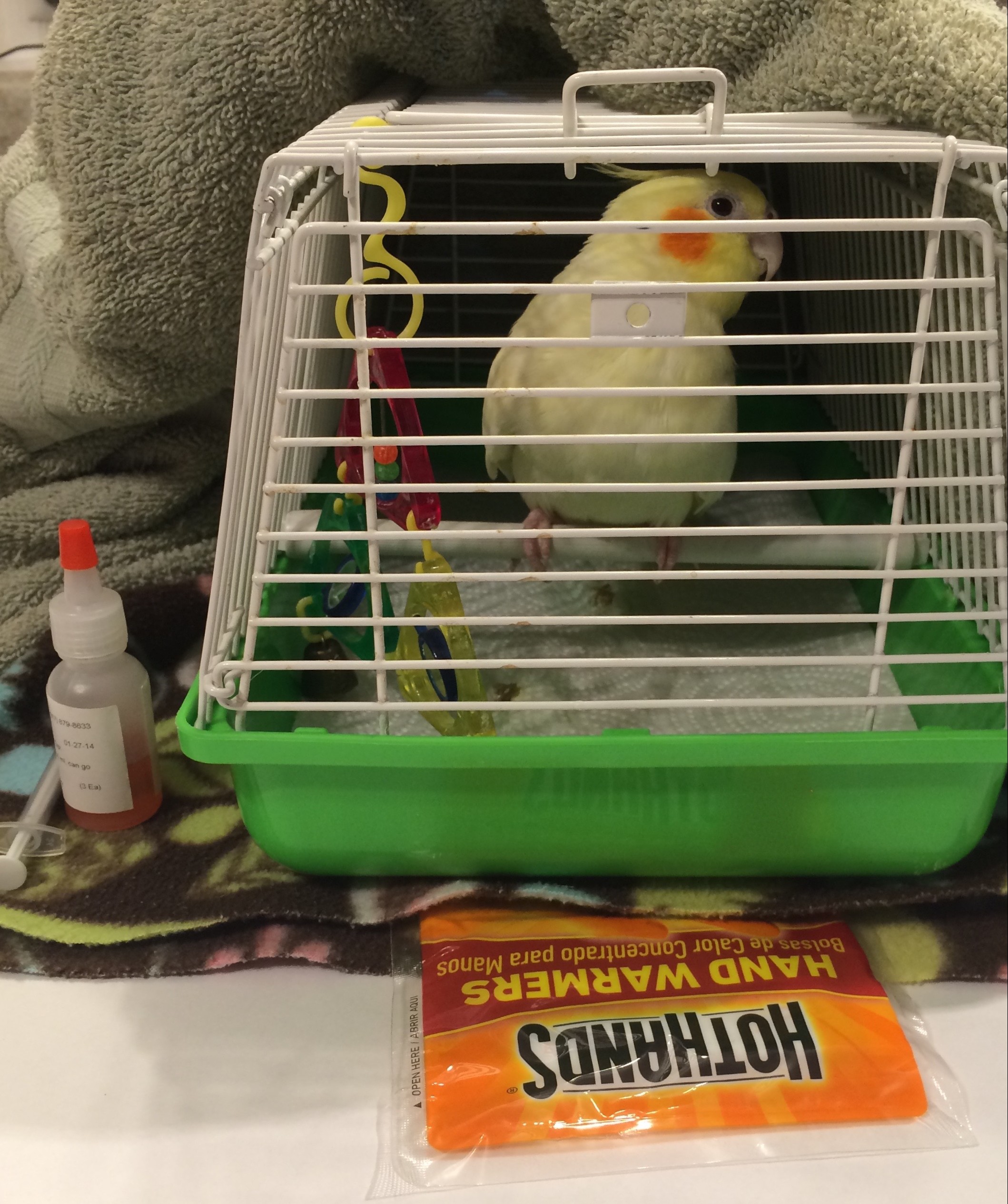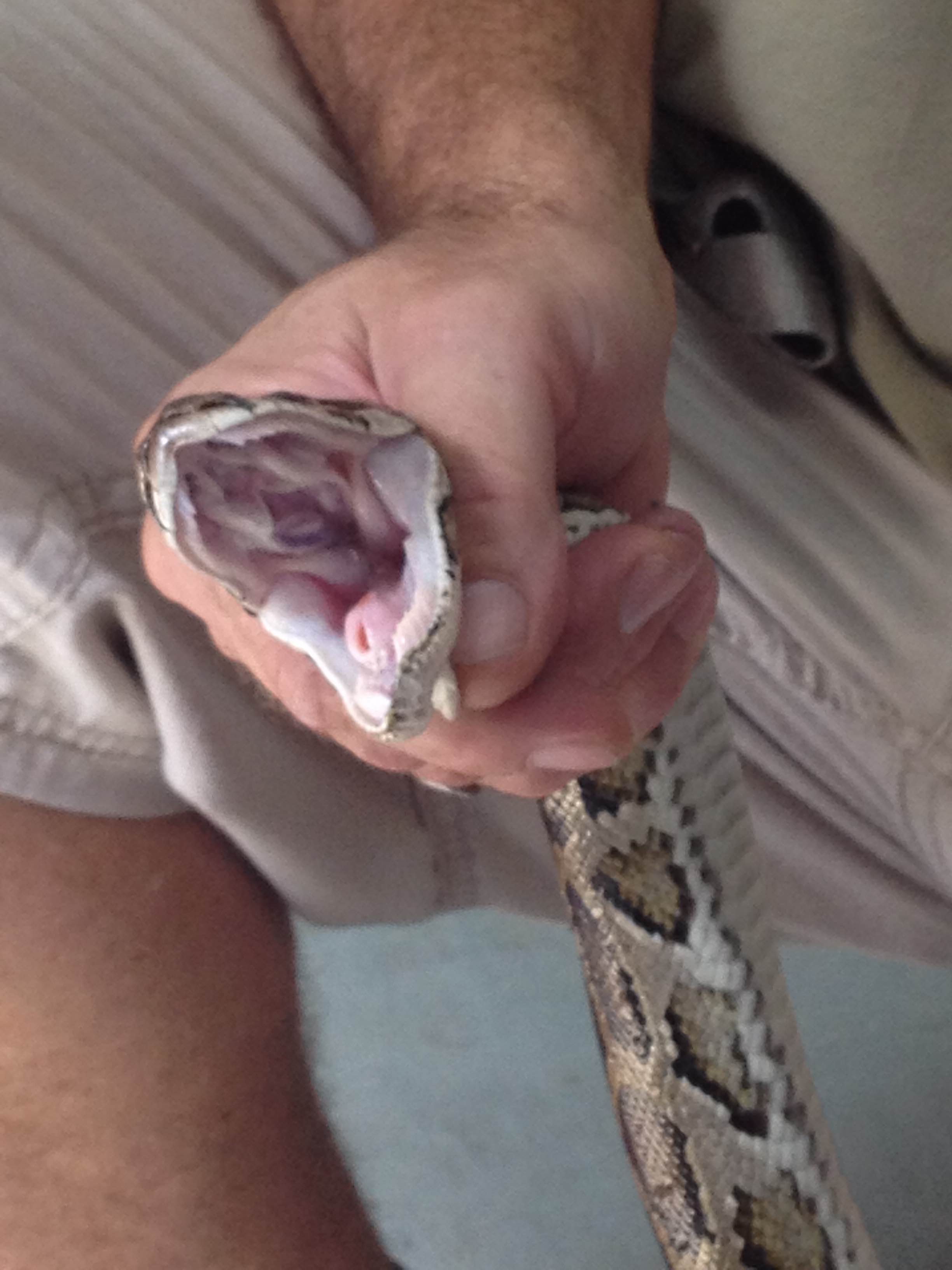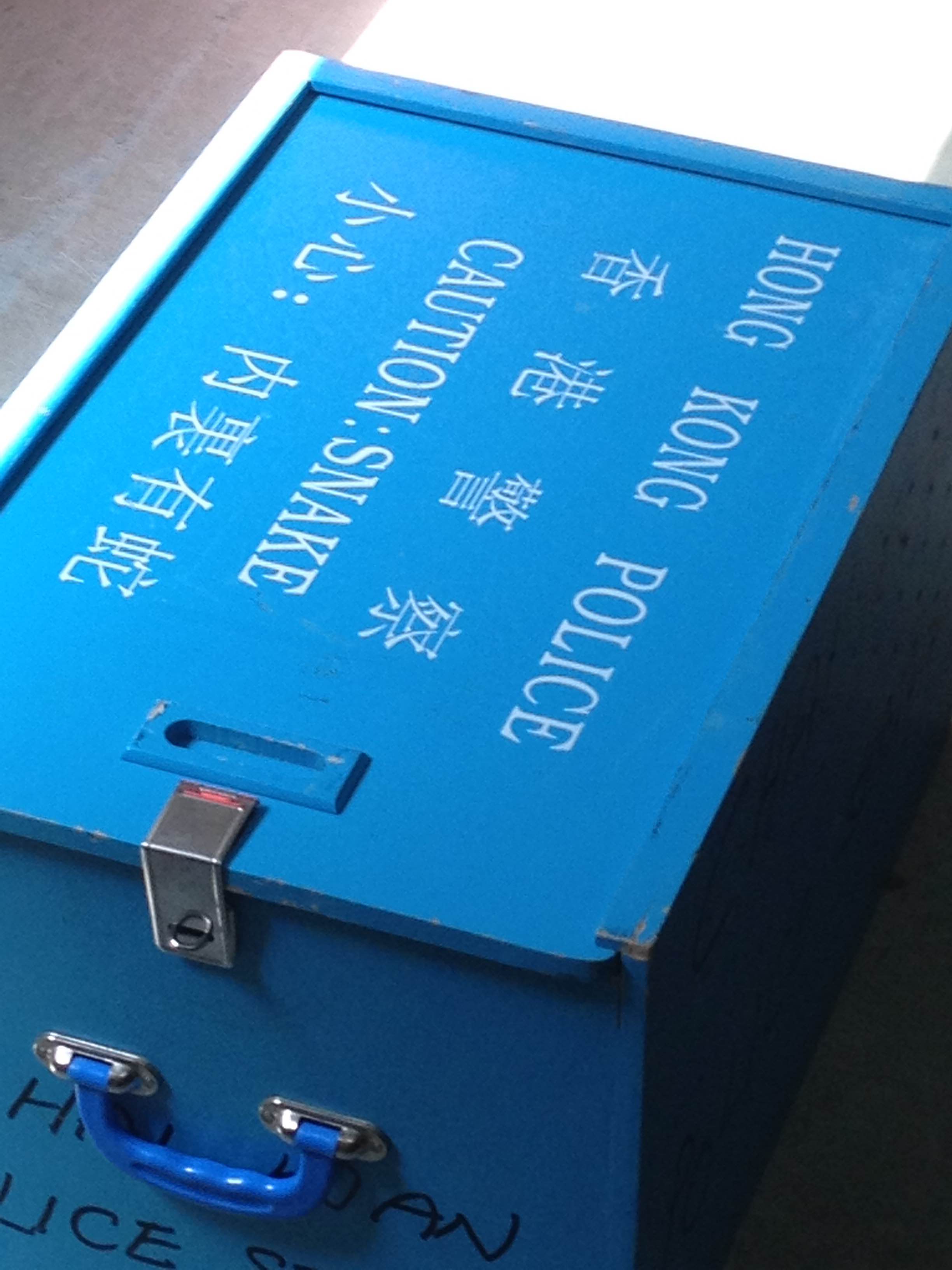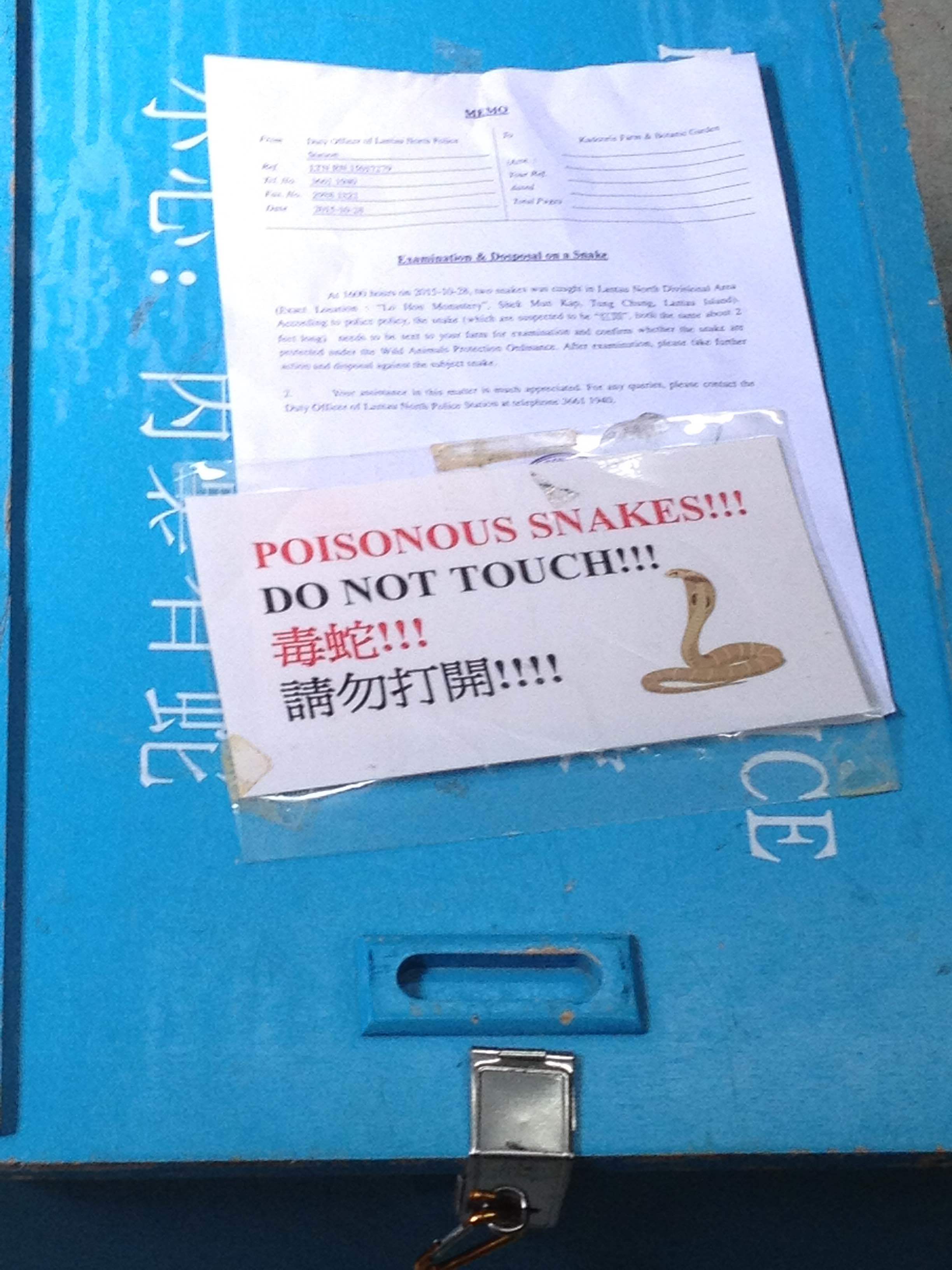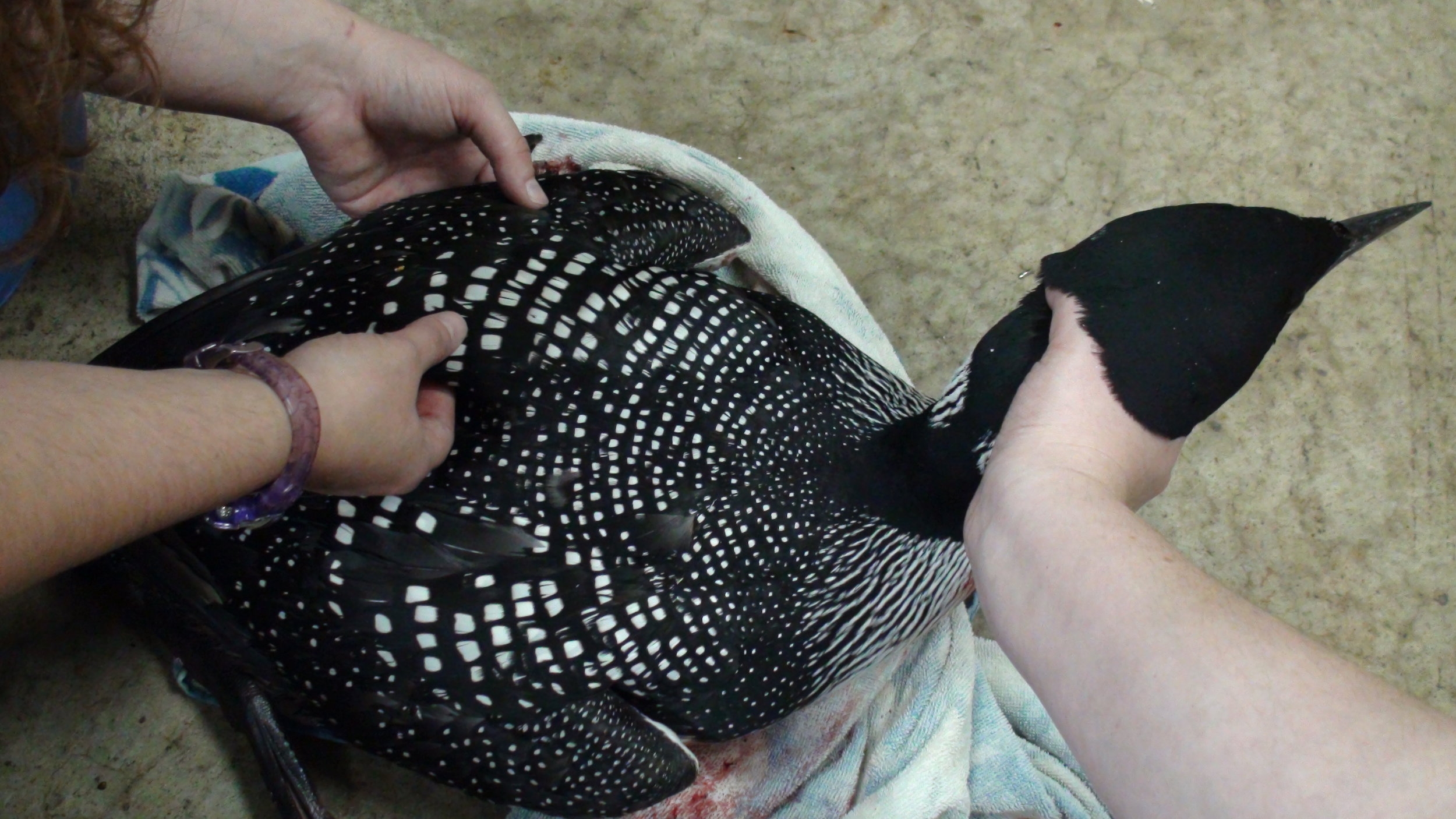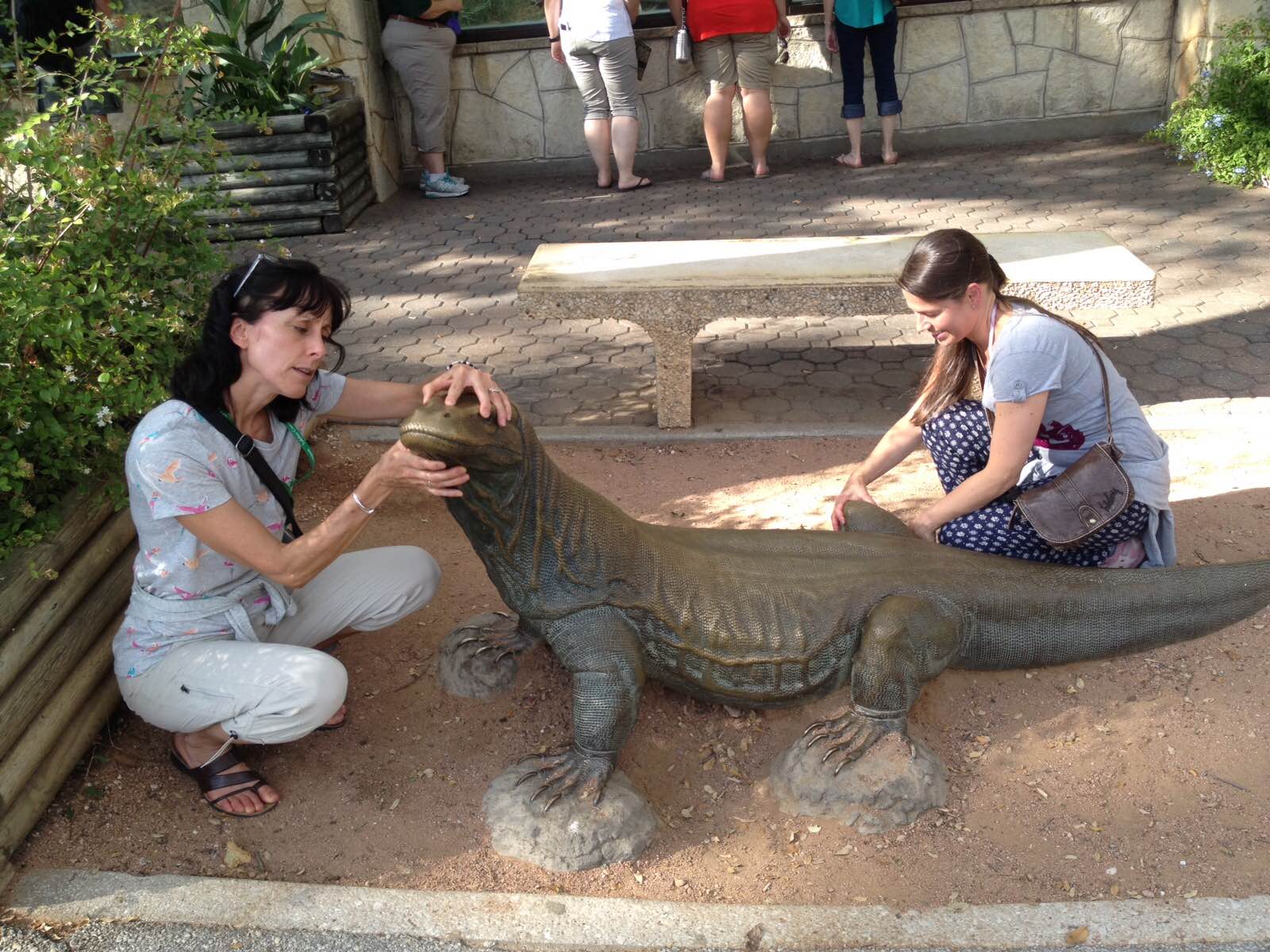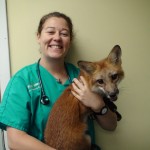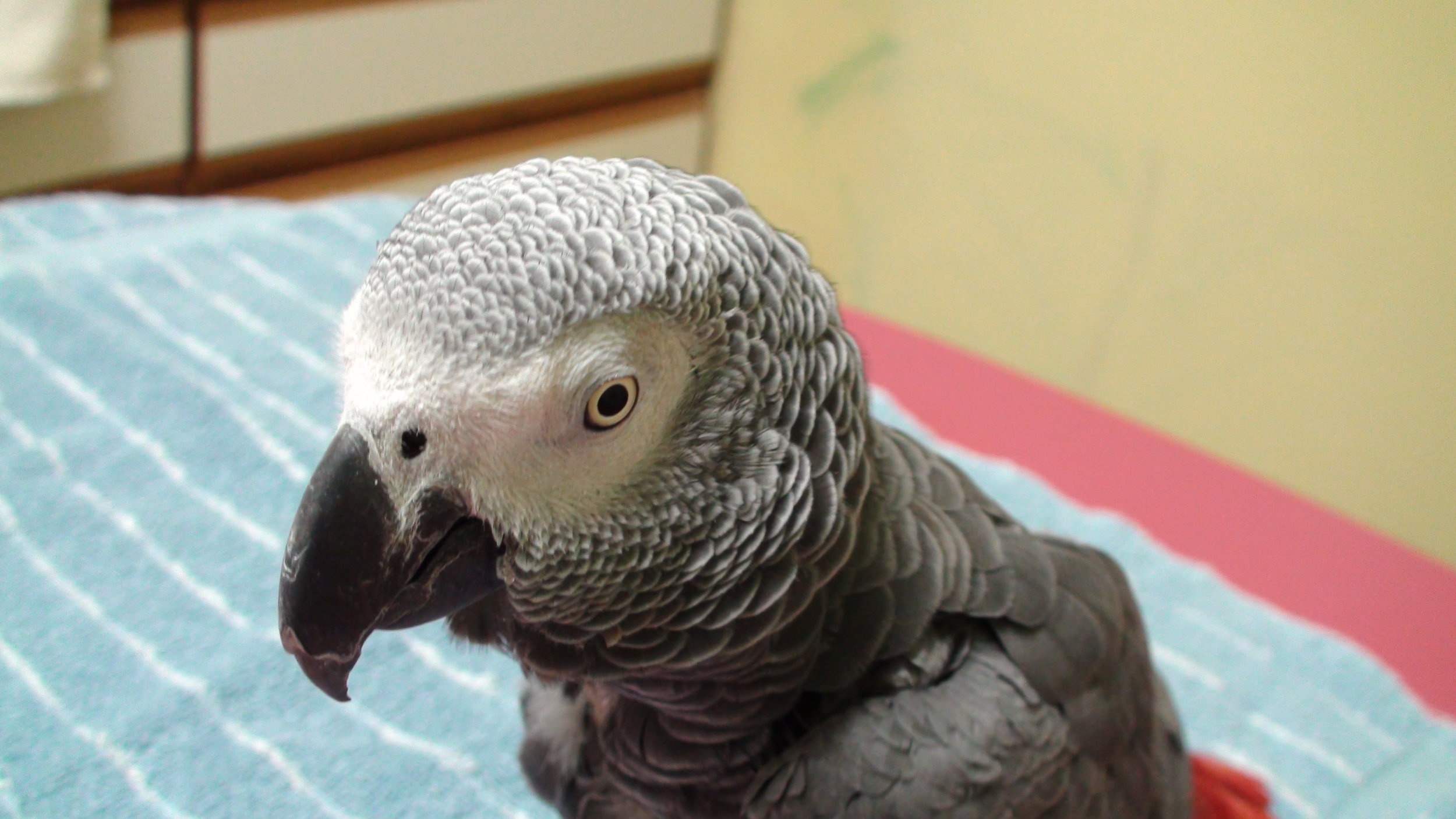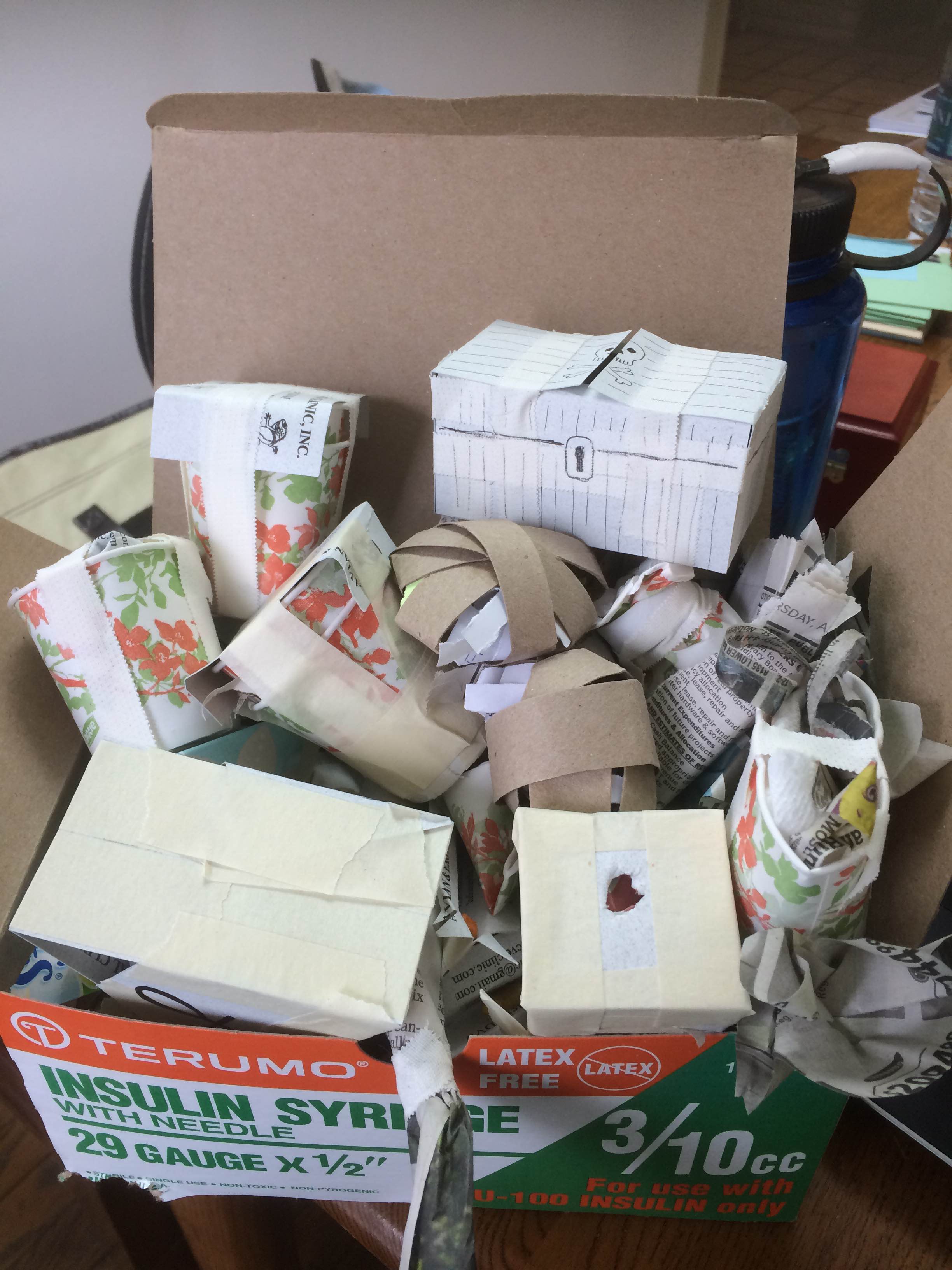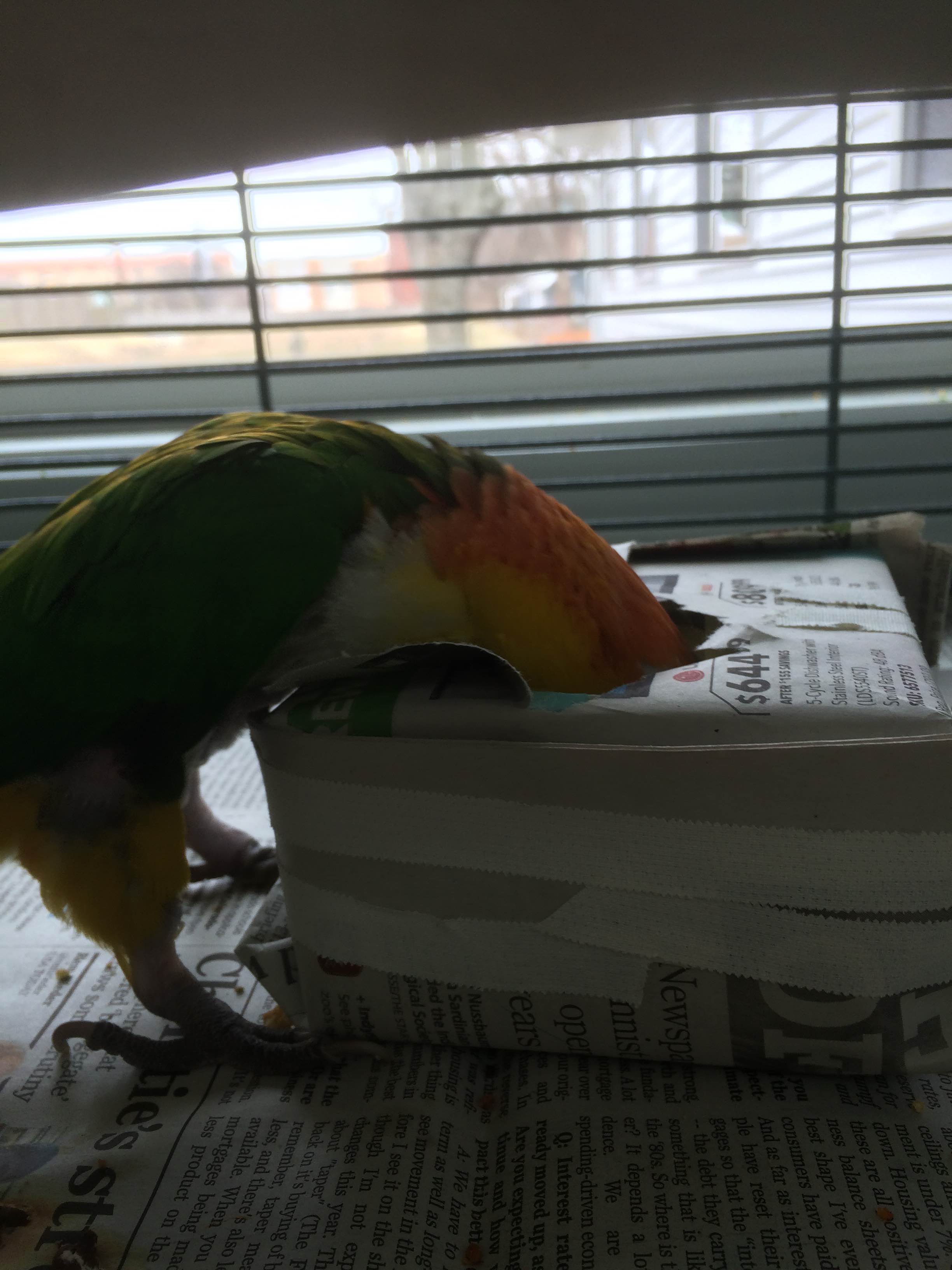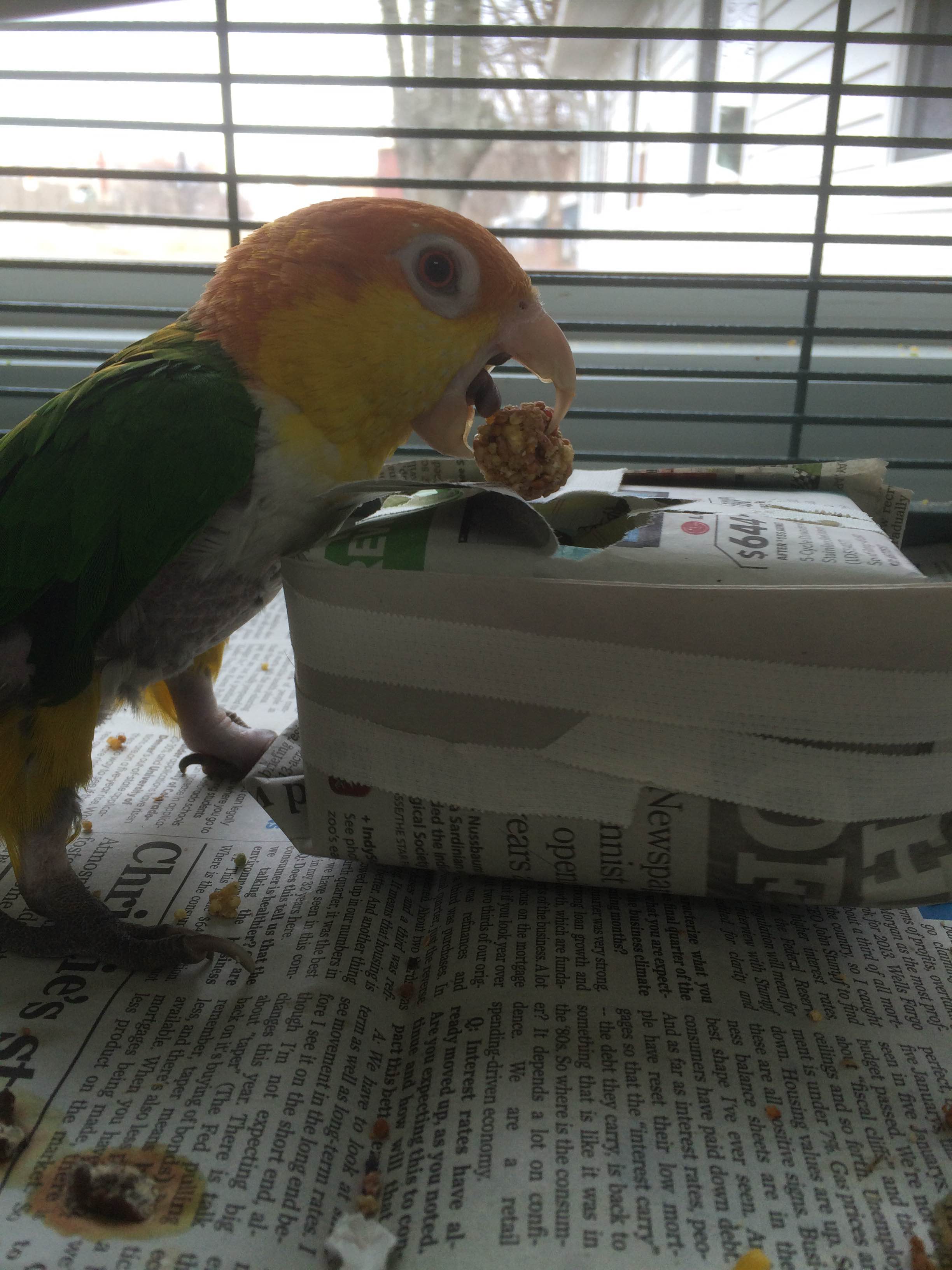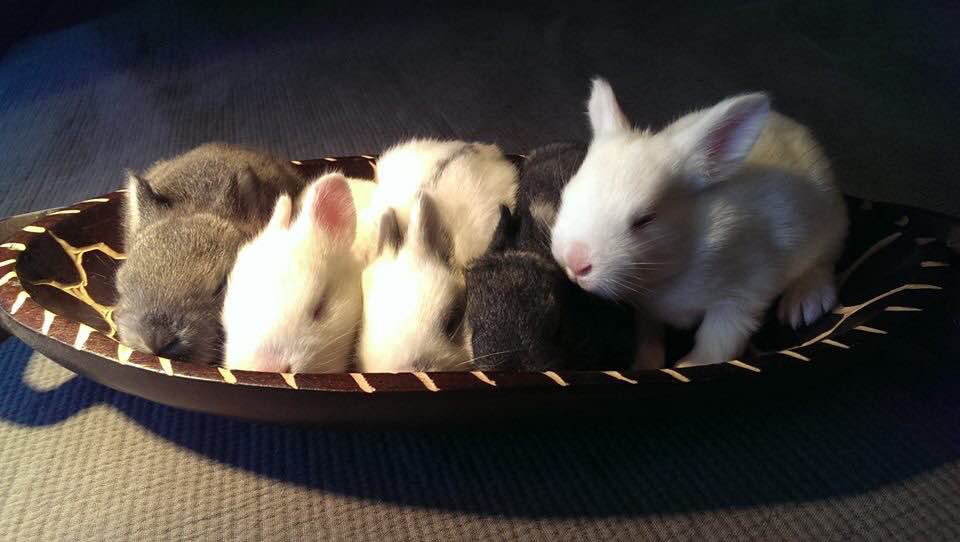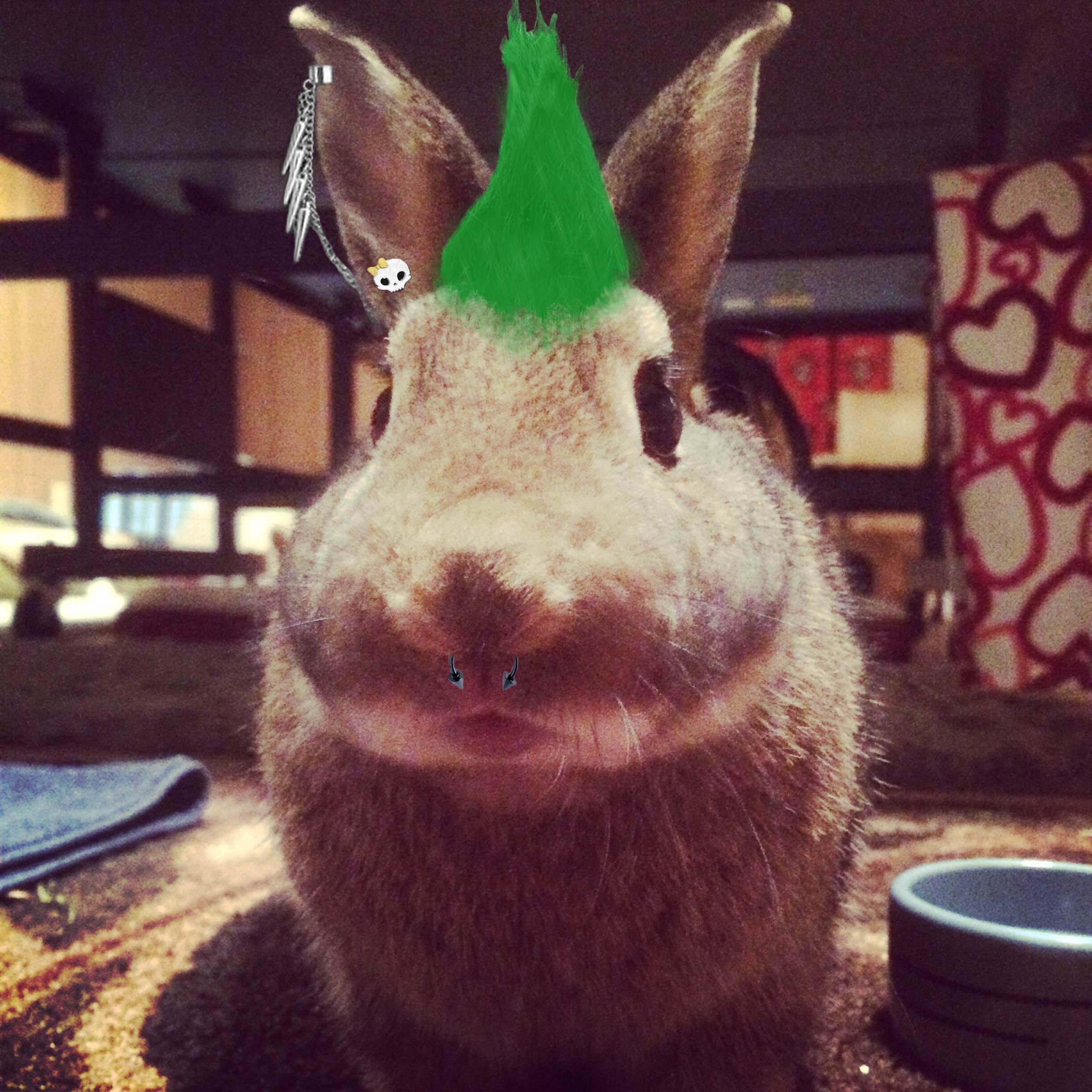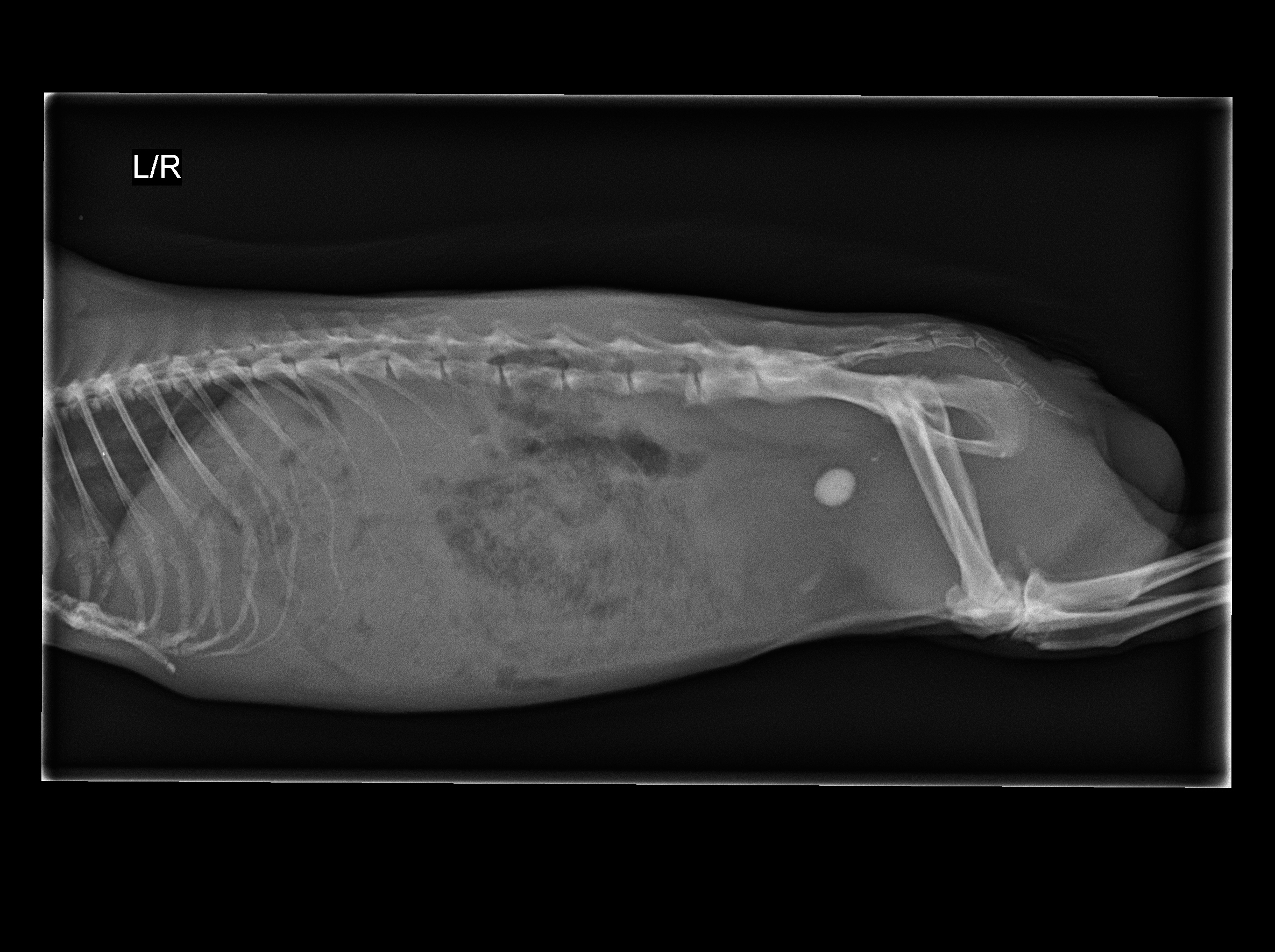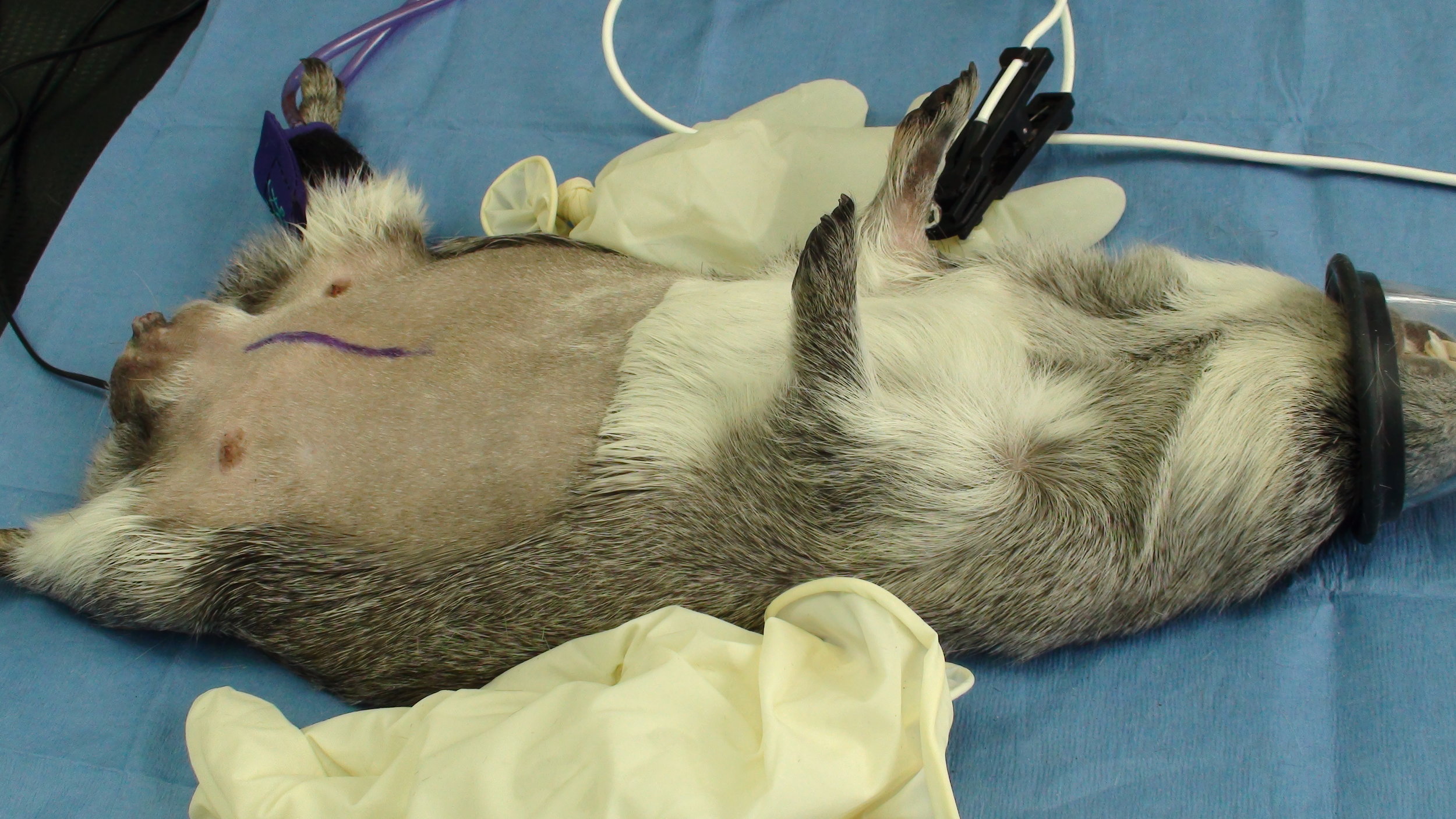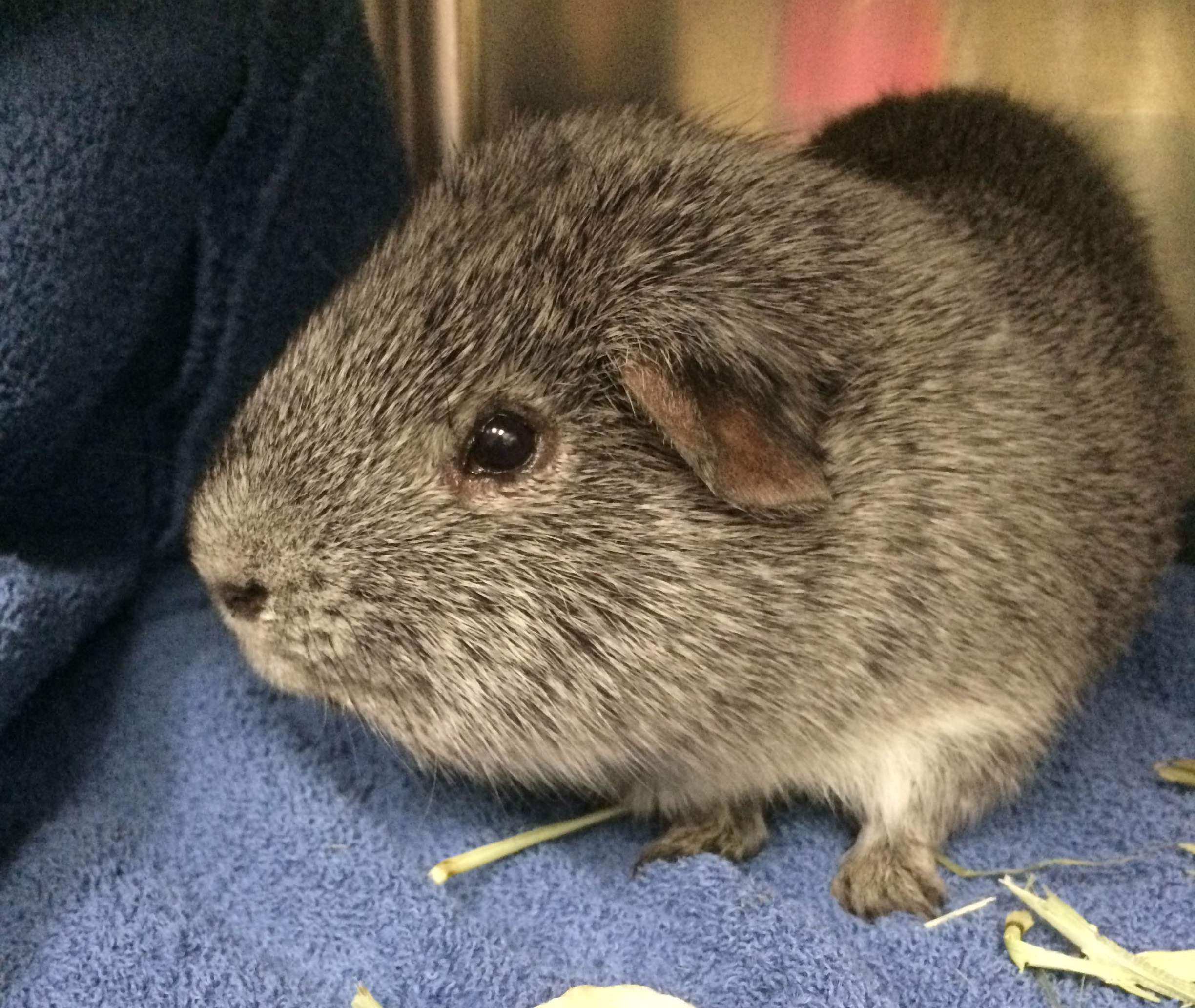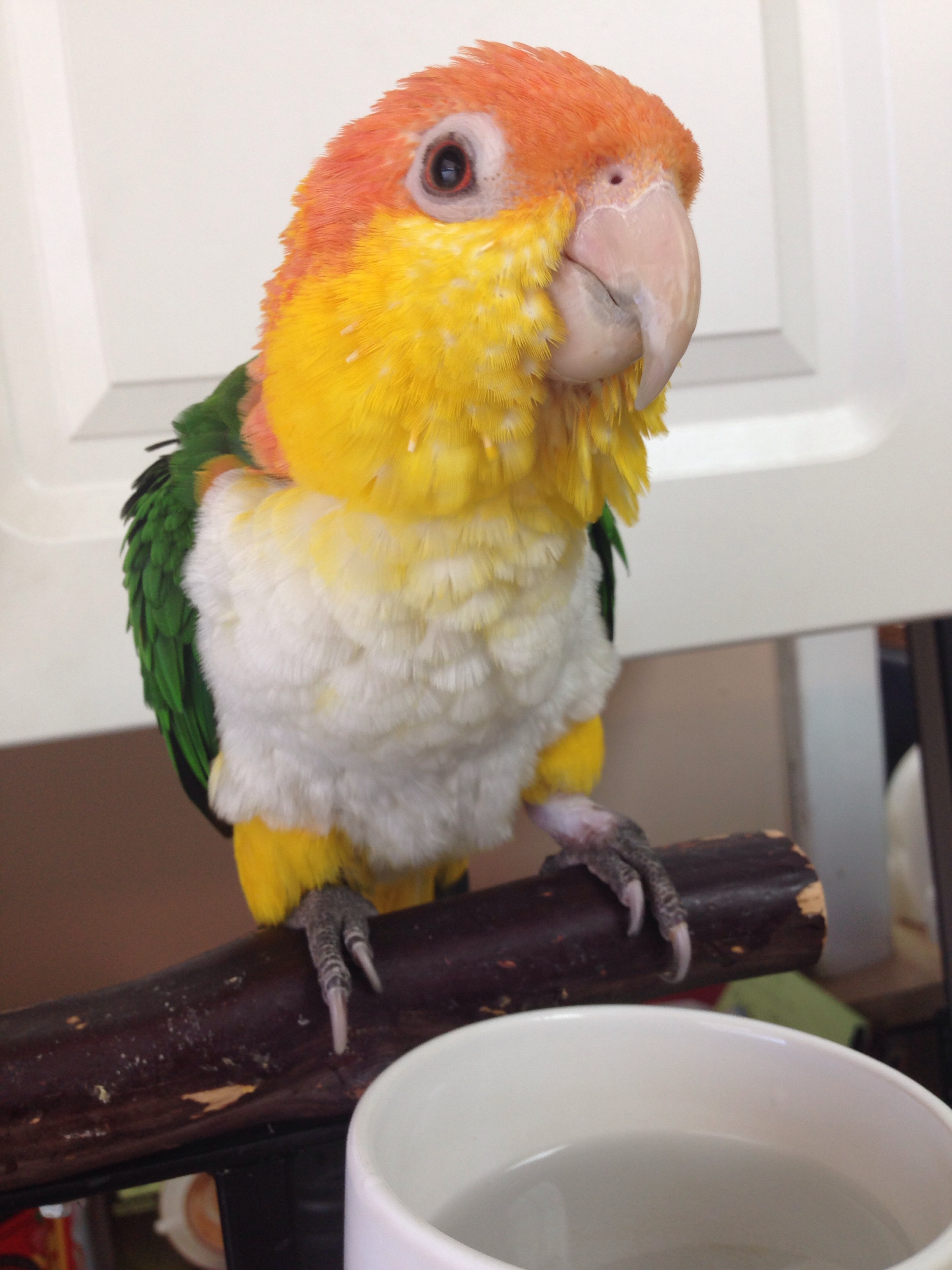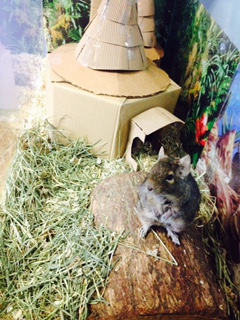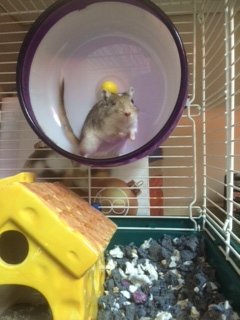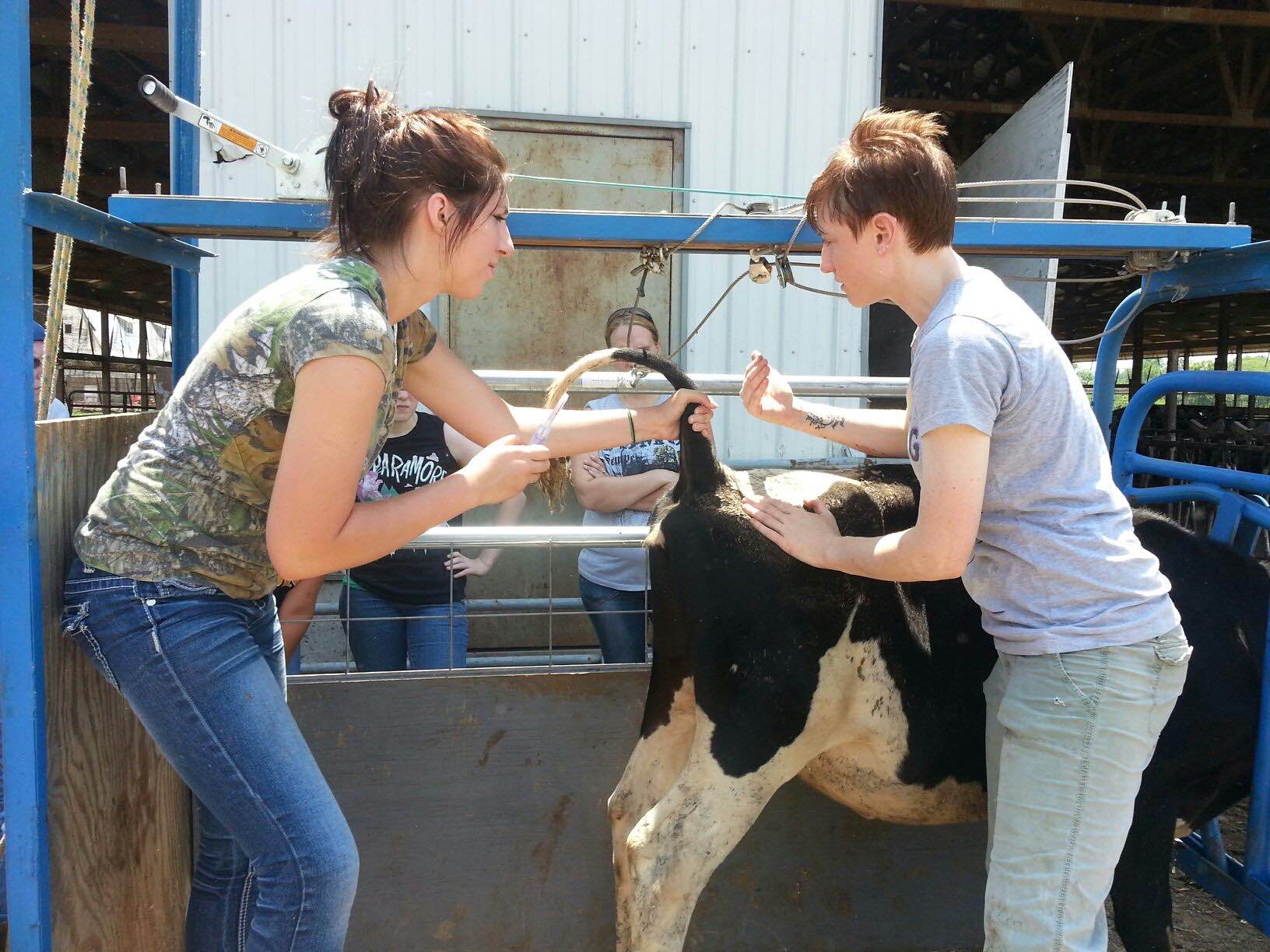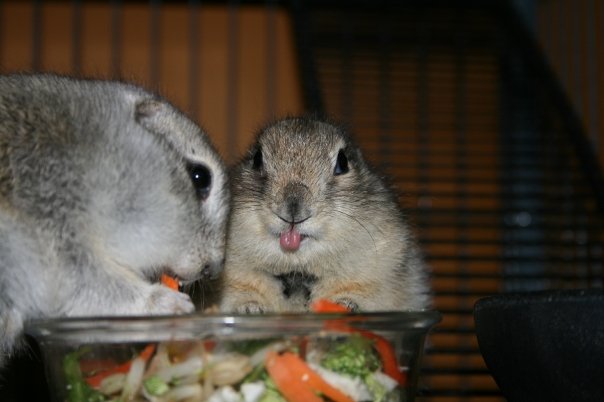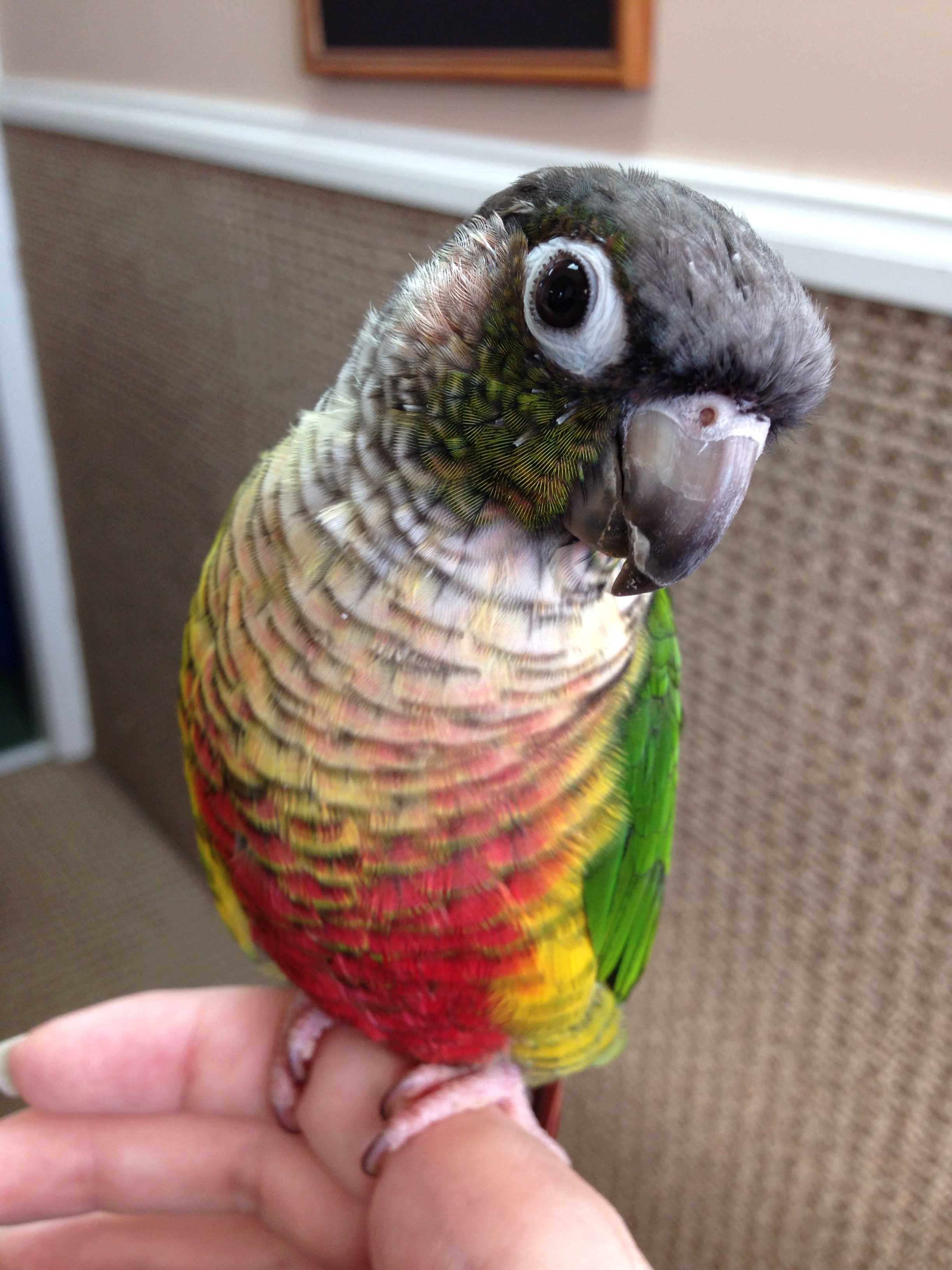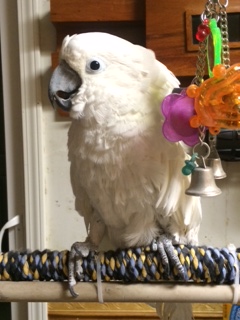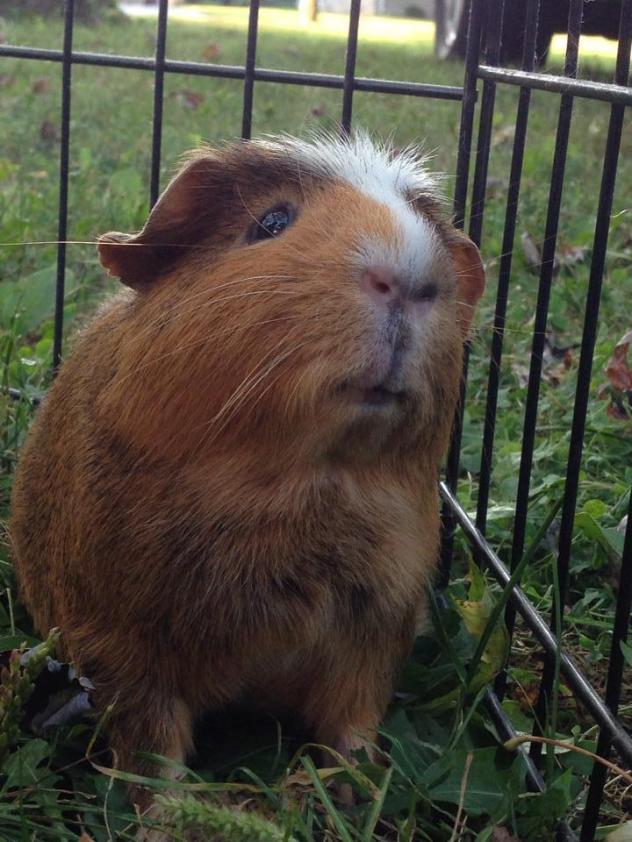Exotic pets occasionally eat things that aren't actually food. The most common culprits are young ferrets, who are known for eating rubber, cloth and other unusual objects (we removed some red cloth from the intestines of a young ferret on April Fool's Day, which was not a good trick for her to play.
Birds do this occasionally, too.
This is the story of Boom Boom, the 9 year old African Grey parrot who after all of this time should have known what was good to eat and what was not.
Boom Boom came in weak and not eating. Luckily, his owner agreed to let us run some blood tests and get some radiographs. A careful look showed bright objects in the ventriculus (part of the stomach of the bird). They appear uniform in appearance, which suggests they aren't small rocks or grit, but something man-made.
Since some innocent-appearing objects like beads or plastic can contain heavy metals or chemicals, some are actually very toxic. For this reason, we recommended that Boom Boom needed to part with his tiny objects.

A few years ago Dr. Larry Nemetz introduced a great technique for flushing material out of the stomachs of birds without the need for opening the body and then the stomach. This is exactly what we did with Boom Boom. The technique doesn't have an official name, but we like the term "Suck n' Flush". A small incision is made in the crop, and a tube gently introduced into the proventriculus (first part of the stomach). It's then gently flushed and aspirated until all of the stuff is gone, which is confirmed with another set of x-rays. This x-ray shows that a few of the beads are still remaining after the first attempt to flush them out (red arrow). The second attempt got the rest of them out. The bottom red arrow is pointing to the intraosseous catheter used to give Boom Boom fluids during surgery.
Here are Boom Boom's particles:
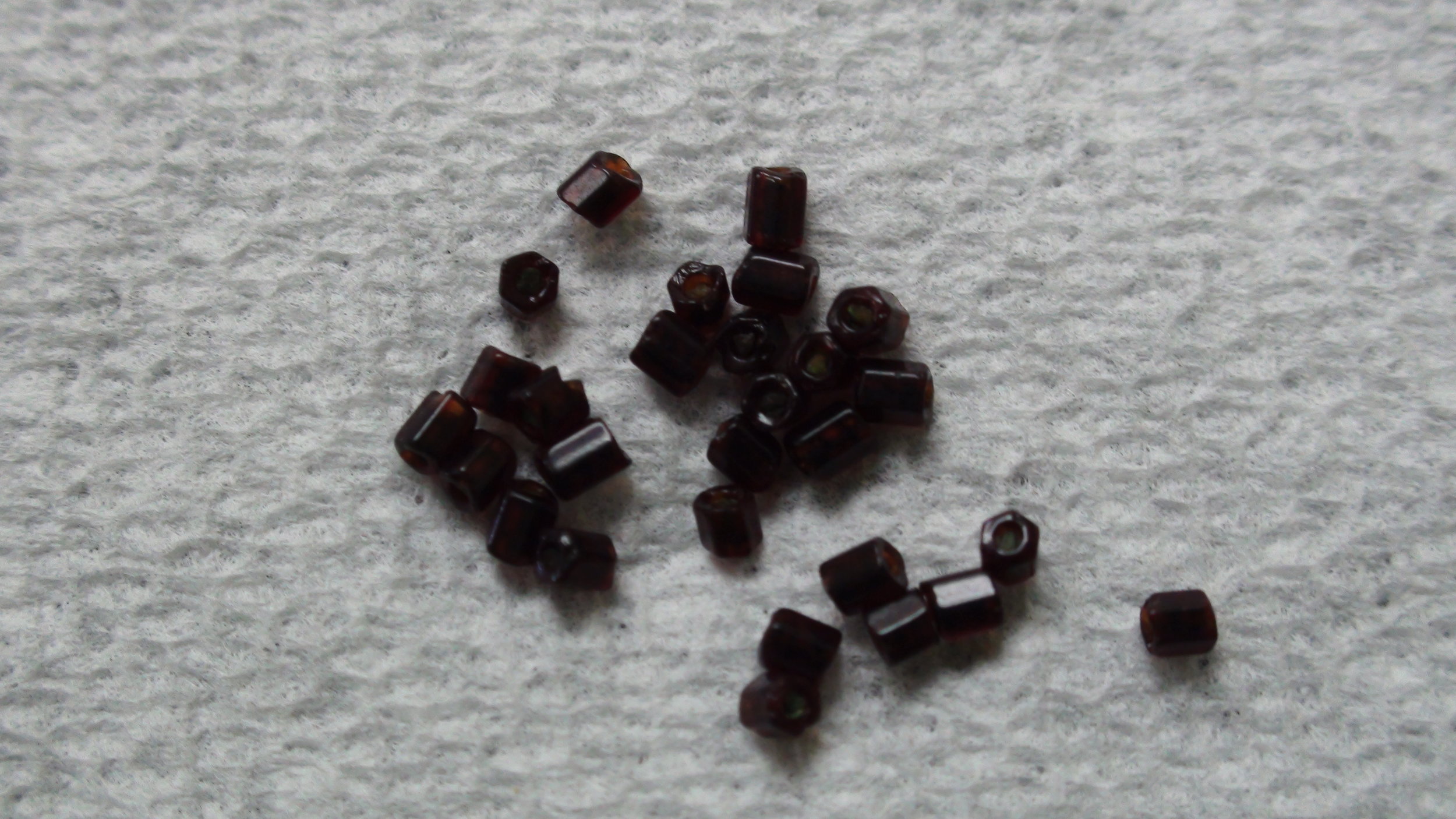
Boom Boom was so sick he stayed in the hospital for a week, and even required a blood transfusion. Luckily for Boom Boom, we had "Gandalf" a lovely African grey parrot in rescue who happened to be available for donation that day. After a week, Boom Boom was much better and went home. On the day Boom Boom went home, Gandalf happened to be in the reception room and they got to say "hi" from across the room!
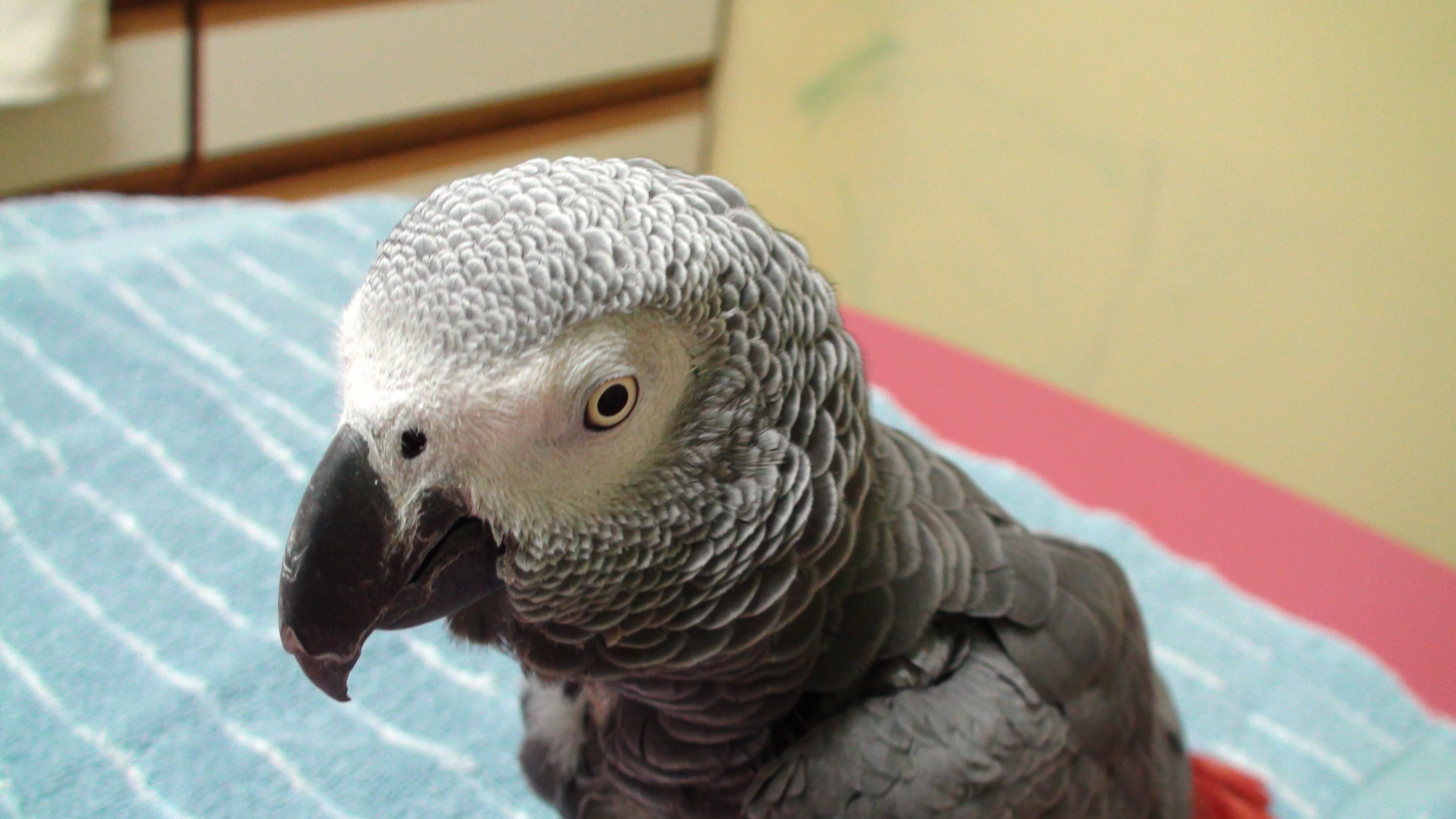 Here he is at recheck! You can see the bare spot where we made the incision to insert the tube for flushing. Even to this day his owner cannot find the source of the beads and Boom Boom is not telling! Mom is determined to keep a closer eye on that bird.
Here he is at recheck! You can see the bare spot where we made the incision to insert the tube for flushing. Even to this day his owner cannot find the source of the beads and Boom Boom is not telling! Mom is determined to keep a closer eye on that bird.


